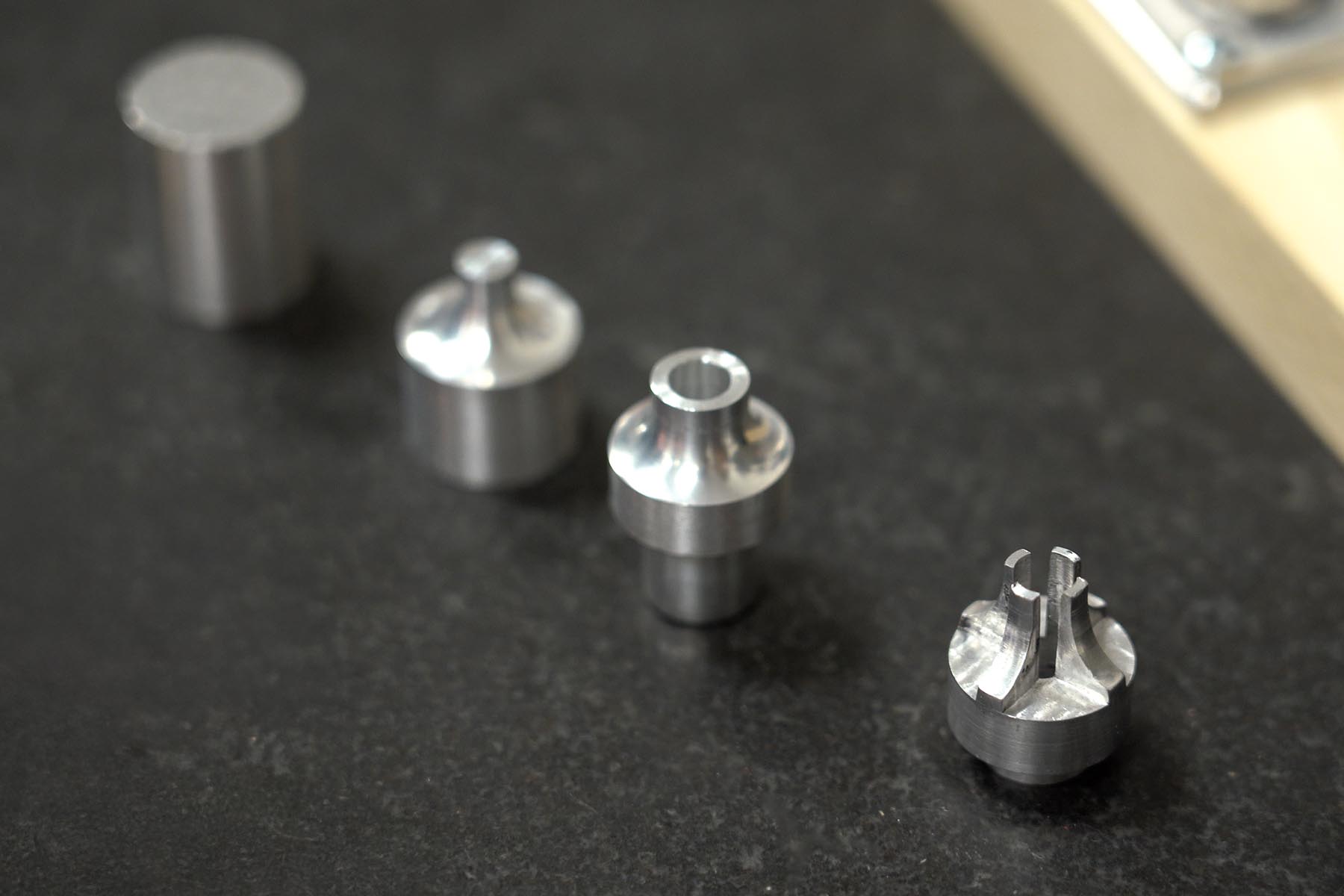"Retooling" Purdue ME's Manufacturing Curriculum
"Retooling" Purdue ME's Manufacturing Curriculum
Manufacturing and design have always been a part of Purdue’s Mechanical Engineering curriculum. But starting this Fall, new students will go more hands-on with manufacturing classes in their sophomore, junior, and senior years.
“Design and manufacturing have always been an integral part of the Purdue ME experience,” said Francisco Montalvo, lecturer in the School of Mechanical Engineering, and Assistant Director for Experiential Learning. “But we now have a dedicated design and manufacturing track, where students get hands-on experience with manufacturing processes in their sophomore, junior, and senior years.”
It begins sophomore year with ME264 Introduction to Manufacturing for Design, where students are exposed to manufacturing processes for the first time. It continues junior year with ME364 Systematic Engineering Design, where students put their experience to work by designing and manufacturing a prototype to solve a problem. In their final class, ME463 Capstone Engineering Design, students team up to design and engineer a real-world product, pitching their prototype to a panel of industry judges, Shark Tank-style.
And it all begins with a hammer.

“For Purdue ME students, making a hammer has been a rite of passage for decades; I made one when I was a student here,” Montalvo said. “In 2021 we refined the hammer project to become a much more robust educational experience. And now in ME264, we are using the hammer as a springboard to teach students about a whole suite of manufacturing processes.”
Students begin in the machine shop, where they learn about lathes, saws, drill presses, sanders, and everything else that goes into making the aluminum hammer. Then they learn about CNC (computer numeric control), CAD (computer aided design), and CAM (computer-aided manufacturing). Finally they combine their hands-on experience with their classroom theory, designing and building a multi-faceted stand to display their hammer.
“It’s up to the students to design what their hammer stand will be like,” Montalvo said. “It can integrate sheet metal, woodworking, engraving, and even some lighting and electronics. For example, we show them how to take a 1-inch piece of aluminum stock and machine it into a tiny fidget spinner that looks like the Engineering Fountain. But it’s up to them if they need to use a CNC lathe, a conventional lathe and mill, or some combination to achieve their goal.”

Building the future
The impetus for “retooling” Purdue’s manufacturing curriculum started with feedback from alumni working in industry. “They would come back to visit campus and recruit our students,” Montalvo said, “and they told us that their companies need employees who have real-life hands-on manufacturing experience.”
From there, a team of faculty, staff, and students began to refine what a manufacturing-focused track would look like. “We want ME students to design and build something every year they are here,” said Eckhard Groll, William E. and Florence E. Perry Head of Mechanical Engineering, and Reilly Distinguished Professor of Mechanical Engineering. “That’s one of the reasons our recent ME Building Renovation project focused so much on expanding our maker spaces and instructional labs.”
It's also a logistical challenge. Purdue teaches more undergraduate students than any other mechanical engineering school in the country, and moving that many students through a machine shop requires a concerted effort from a big team.
“Even though we’re so big, that one-on-one experience is very important here at Purdue,” Montalvo said. “To learn these machines, you really need to see it close-up, get your hands on the machines, and be able to ask questions individually. It’s awesome to see students learn the theory, operate the machines, and then finally hold the thing they built in their hands.”
Ultimately, the goal is to prepare students with as broad a suite of experiences as possible. “As they progress through Purdue, they learn the fundamentals in classes like this,” Montalvo said. “Then they put it to work for a motorsports or robotics team. They apply it directly to the real world during their internships and co-ops. They design experiments for undergraduate research projects. By the time they graduate, they are 100% industry-ready.”
Source: Francisco Montalvo, fmontalvo@purdue.edu
Writer: Jared Pike, jaredpike@purdue.edu
